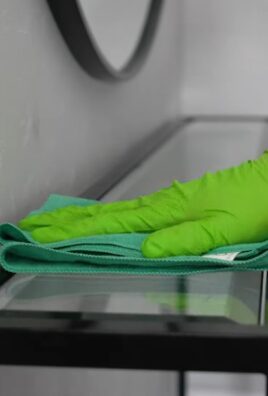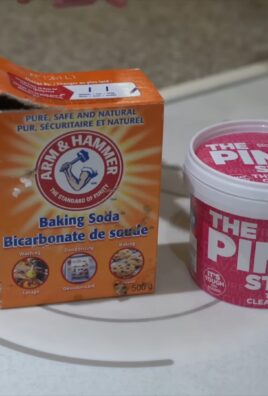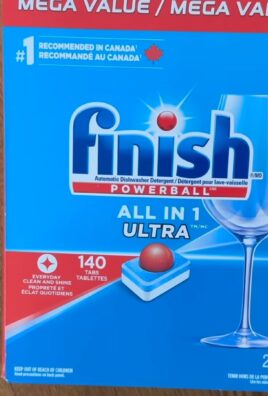Vinegar cleaning uses are more than just a kitchen staple; they’re a secret weapon for a sparkling home! Have you ever wondered how your grandmother kept her house so impeccably clean without all the fancy, chemical-laden products we have today? The answer likely lies in the humble bottle of vinegar. For generations, vinegar has been a go-to cleaning solution, passed down through families and cultures for its effectiveness and affordability. From ancient civilizations using it for medicinal purposes to modern-day eco-conscious households, vinegar’s cleaning power has stood the test of time.
But why should you ditch the expensive cleaners and embrace vinegar cleaning uses? Well, for starters, it’s incredibly budget-friendly. Let’s be honest, keeping a home clean can be costly, but vinegar offers a natural, effective alternative that won’t break the bank. More importantly, it’s a fantastic way to reduce your exposure to harsh chemicals that can be harmful to your health and the environment. In this article, I’m going to share some amazing DIY tricks and hacks using vinegar that will transform your cleaning routine. Get ready to discover how to effortlessly tackle everything from stubborn stains to grimy surfaces, all with the power of this simple, yet mighty, ingredient!

DIY Vinegar Cleaning Power: Unleash the Natural Cleaning Beast!
Hey there, fellow DIY enthusiasts! I’m super excited to share my ultimate guide to using vinegar for cleaning. Forget those harsh chemicals and expensive cleaners – vinegar is a natural, affordable, and incredibly versatile cleaning powerhouse. I’ve been using it for years, and I’m constantly amazed by its effectiveness. So, grab your vinegar bottle, and let’s get cleaning!
Why Vinegar? The Magic Behind the Mild Acid
Before we dive into the nitty-gritty, let’s talk about why vinegar works so well. The secret lies in its acetic acid content. This mild acid is strong enough to dissolve grime, soap scum, hard water stains, and even some types of mold and mildew. Plus, it’s a natural disinfectant, helping to kill bacteria and viruses. And the best part? It’s safe for your family and the environment!
The Essential Vinegar Cleaning Toolkit
Okay, so you’re sold on vinegar. Great! Here’s what you’ll need to get started:
* White Distilled Vinegar: This is your go-to vinegar for cleaning. It’s inexpensive and readily available.
* Spray Bottles: Essential for applying vinegar solutions to surfaces. I recommend having a few on hand for different purposes.
* Microfiber Cloths: These are fantastic for wiping surfaces clean without leaving streaks or lint.
* Baking Soda: This is vinegar’s best friend! Together, they create a powerful cleaning duo.
* Essential Oils (Optional): If you’re not a fan of the vinegar smell, a few drops of your favorite essential oil can help mask the odor. Lavender, lemon, and tea tree oil are all great choices.
* Cleaning Gloves: Protect your hands, especially if you’re sensitive to vinegar.
* Old Toothbrush: Perfect for scrubbing grout and other hard-to-reach areas.
* Bucket: For mixing larger cleaning solutions.
* Squeegee: Ideal for cleaning windows and mirrors.
General Cleaning Solutions: Recipes for Success
Here are a few basic vinegar cleaning solutions that I use all the time:
* All-Purpose Cleaner: Mix equal parts white distilled vinegar and water in a spray bottle.
* Glass Cleaner: Mix 1/4 cup white distilled vinegar with 2 cups water in a spray bottle.
* Drain Cleaner: Pour 1 cup baking soda down the drain, followed by 1 cup white distilled vinegar. Let it fizz for 30 minutes, then flush with hot water.
* Hard Water Stain Remover: Soak a cloth in undiluted white distilled vinegar and place it over the stain. Let it sit for a few hours, then scrub and rinse.
Cleaning Room by Room: My Vinegar Cleaning Guide
Now, let’s get down to the specifics! I’ll walk you through how I use vinegar to clean different areas of my home.
Cleaning the Kitchen: Vinegar’s Culinary Kingdom
The kitchen is a breeding ground for germs and grime, but vinegar can handle it all!
1. Cleaning Countertops: Spray your all-purpose vinegar solution onto countertops and wipe clean with a microfiber cloth. Be careful using vinegar on natural stone surfaces like granite or marble, as it can etch the surface.
2. Cleaning the Sink: Sprinkle baking soda into the sink, then spray with vinegar. Let it fizz, then scrub and rinse. This works wonders for removing stains and odors.
3. Cleaning the Microwave: Mix 1/2 cup vinegar with 1/2 cup water in a microwave-safe bowl. Microwave for 5 minutes. The steam will loosen grime, making it easy to wipe clean.
4. Cleaning the Dishwasher: Pour 1 cup of white distilled vinegar into the bottom of your empty dishwasher and run a normal cycle. This will help remove mineral buildup and freshen the dishwasher.
5. Cleaning the Coffee Maker: Fill the water reservoir with equal parts white distilled vinegar and water. Run a brewing cycle, then run two cycles with fresh water to rinse.
6. Cleaning the Cutting Board: Wipe your cutting board with undiluted white distilled vinegar after each use to kill bacteria.
7. Cleaning the Refrigerator: Wipe down the interior of your refrigerator with a solution of equal parts white distilled vinegar and water. This will help remove spills and odors.
8. Cleaning Greasy Stovetop: Spray the stovetop with vinegar, let it sit for a few minutes to loosen the grease, then wipe clean. For stubborn grease, make a paste of baking soda and vinegar, apply it to the grease, let it sit for a while, and then scrub.
Cleaning the Bathroom: Banishing Soap Scum and Grime
The bathroom is another area where vinegar shines!
1. Cleaning the Shower and Tub: Spray your all-purpose vinegar solution onto shower walls and the tub. Let it sit for a few minutes, then scrub and rinse. For stubborn soap scum, heat the vinegar in the microwave for a minute or two before spraying.
2. Cleaning the Toilet: Pour 1 cup of white distilled vinegar into the toilet bowl. Let it sit for at least 30 minutes, then scrub and flush.
3. Cleaning the Showerhead: Fill a plastic bag with white distilled vinegar and secure it around the showerhead with a rubber band. Make sure the showerhead is submerged in the vinegar. Let it soak overnight, then remove the bag and run the shower to flush out any remaining vinegar.
4. Cleaning Grout: Spray grout with vinegar, let it sit for a few minutes, then scrub with an old toothbrush. For tough stains, make a paste of baking soda and vinegar and apply it to the grout.
5. Cleaning Mirrors and Windows: Spray your glass cleaner solution onto mirrors and windows and wipe clean with a microfiber cloth or squeegee.
Cleaning the Laundry Room: Vinegar’s Fabric Freshening Power
Vinegar isn’t just for cleaning surfaces; it’s also a great laundry booster!
1. Fabric Softener: Add 1/2 cup of white distilled vinegar to the fabric softener dispenser. It will soften clothes and help remove detergent residue.
2. Laundry Booster: Add 1 cup of white distilled vinegar to your wash cycle to help brighten colors and remove odors.
3. Stain Remover: Pre-treat stains with undiluted white distilled vinegar before washing.
4. Iron Cleaner: Fill the iron’s water reservoir with equal parts white distilled vinegar and water. Turn the iron on and steam it for a few minutes. Then, empty the reservoir and fill it with fresh water. Steam again to rinse.
5. Freshening Musty Towels: Wash musty towels with 1 cup of vinegar in the washing machine.
Cleaning Other Areas: Vinegar’s Versatile Applications
Vinegar can be used to clean so many other things around your home!
1. Cleaning Floors: Mop floors with a solution of 1/2 cup white distilled vinegar per gallon of water. Avoid using vinegar on hardwood floors, as it can damage the finish.
2. Cleaning Carpets: Mix equal parts white distilled vinegar and water in a spray bottle. Spray the solution onto the carpet stain, let it sit for a few minutes, then blot with a clean cloth.
3. Cleaning Upholstery: Test the vinegar solution on an inconspicuous area of the upholstery first. If it doesn’t damage the fabric, spray the solution onto the stain, let it sit for a few minutes, then blot with a clean cloth.
4. Cleaning Blinds: Mix equal parts white distilled vinegar and water in a bowl. Dip a clean cloth into the solution and wipe down the blinds.
5. Cleaning Toys: Wipe down toys with a solution of equal parts white distilled vinegar and water to disinfect them.
6. Removing Stickers and Labels: Soak a cloth in white distilled vinegar and place it over the sticker or label. Let it sit for a few minutes, then peel off the sticker or label.
7. Freshening the Air: Simmer a pot of water with a few tablespoons of white distilled vinegar to neutralize odors in the air. You can also add some citrus peels or spices for a pleasant scent.
8. Cleaning Your Humidifier: Fill the humidifier with equal parts white distilled vinegar and water. Let it run for an hour, then empty and rinse thoroughly. This will help remove mineral buildup and prevent mold growth.
Dealing with the Vinegar Smell: Tips and Tricks
Okay, let’s address the elephant in the room: the vinegar smell. Some people love it, some people hate it. If you’re in the latter camp, don’t worry! Here are a few tips to minimize the odor:
* Ventilate: Open windows and doors to air out the room while you’re cleaning.
* Essential Oils: Add a few drops of your favorite essential oil to your vinegar cleaning solutions.
*

Conclusion
So, there you have it! Mastering the art of vinegar cleaning is not just about saving money; it’s about embracing a more sustainable and effective way to keep your home sparkling. We’ve explored the versatility of this humble household staple, revealing its power to tackle everything from stubborn grime to lingering odors.
Why is this DIY trick a must-try? Because it’s simple, safe, and incredibly effective. Unlike harsh chemical cleaners that can irritate your skin and pollute your indoor air, vinegar is a natural alternative that’s gentle on your family and the environment. Plus, it’s readily available and incredibly affordable, making it a budget-friendly option for everyone.
But the beauty of vinegar cleaning lies not only in its effectiveness but also in its adaptability. Feel free to experiment with different dilutions and combinations to find what works best for your specific needs. For instance, add a few drops of your favorite essential oil, like lavender or lemon, to your vinegar solution for a refreshing scent boost. Or, infuse your vinegar with citrus peels for a more potent cleaning power and a zesty aroma. You can even create a powerful scouring paste by mixing vinegar with baking soda for tackling tough stains and grime.
Don’t be afraid to get creative and personalize your vinegar cleaning routine. The possibilities are endless!
We wholeheartedly encourage you to give this DIY trick a try. Ditch the expensive, chemical-laden cleaners and embrace the power of vinegar. You’ll be amazed at the results. Not only will your home be cleaner and fresher, but you’ll also be contributing to a healthier and more sustainable lifestyle.
And most importantly, we want to hear about your experience! Share your tips, tricks, and success stories in the comments below. Let us know how you’re using vinegar to clean your home and what amazing results you’ve achieved. Together, we can unlock the full potential of this incredible natural cleaner and create a cleaner, healthier world for ourselves and future generations. So, go ahead, grab that bottle of vinegar, and let the cleaning adventures begin! We are confident that once you experience the magic of vinegar cleaning, you’ll never go back to those harsh chemical cleaners again. It’s a game-changer, a life-saver, and a must-have in every household.
Frequently Asked Questions (FAQs)
Is vinegar safe to use on all surfaces?
While vinegar is a fantastic cleaner, it’s not suitable for all surfaces. Avoid using it on natural stone surfaces like marble, granite, and limestone, as the acidity can etch and damage them. It’s also best to avoid using vinegar on waxed wood furniture, as it can strip the wax finish. When in doubt, always test a small, inconspicuous area first to ensure it doesn’t cause any damage or discoloration.
What type of vinegar is best for cleaning?
Distilled white vinegar is the most commonly recommended type of vinegar for cleaning. It’s clear, inexpensive, and has a consistent acidity level, making it ideal for a wide range of cleaning tasks. While other types of vinegar, such as apple cider vinegar, can also be used, they may have a stronger odor and could potentially stain certain surfaces.
How do I get rid of the vinegar smell after cleaning?
The vinegar smell typically dissipates within a few hours. To speed up the process, you can open windows and doors to ventilate the area. You can also add a few drops of essential oils, such as lavender or lemon, to your vinegar solution to mask the odor. Another trick is to place a bowl of baking soda in the room to absorb any lingering smells.
Can I mix vinegar with bleach?
Absolutely not! Mixing vinegar with bleach creates toxic chlorine gas, which can be extremely harmful and even fatal. Never mix vinegar with any other cleaning products unless specifically instructed to do so by a reliable source. Always use vinegar on its own or with other safe ingredients like baking soda or essential oils.
How do I clean my coffee maker with vinegar?
To clean your coffee maker with vinegar, fill the water reservoir with a solution of equal parts vinegar and water. Run the coffee maker through a full brewing cycle. Then, run it through two more cycles with just plain water to rinse away any remaining vinegar. This will help remove mineral buildup and keep your coffee maker functioning properly.
Can vinegar kill mold?
Yes, vinegar can kill mold. White distilled vinegar is about 80% effective in killing mold species. To kill mold with vinegar, spray undiluted vinegar onto the affected area and let it sit for an hour. Then, wipe the area clean with a damp cloth. For stubborn mold, you may need to repeat the process. Always wear gloves and a mask when dealing with mold.
How do I clean my microwave with vinegar?
Cleaning your microwave with vinegar is easy and effective. Mix equal parts vinegar and water in a microwave-safe bowl. Place the bowl in the microwave and heat it on high for 5-10 minutes, or until the solution boils and the microwave is filled with steam. Carefully remove the bowl and wipe down the inside of the microwave with a clean cloth. The steam will loosen any food splatters and make them easy to remove.
Can I use vinegar to clean my laundry?
Yes, vinegar can be used in laundry. Adding 1/2 cup of white vinegar to your washing machine during the rinse cycle can help soften clothes, remove odors, and brighten colors. Vinegar can also be used to remove stains from clothing. Just pretreat the stain with vinegar before washing.
How do I clean my showerhead with vinegar?
To clean your showerhead with vinegar, fill a plastic bag with white vinegar and secure it around the showerhead with a rubber band. Make sure the showerhead is fully submerged in the vinegar. Let it soak for several hours or overnight. Then, remove the bag and run the shower to flush out any remaining vinegar and mineral deposits.
Is vinegar cleaning safe for pets?
Vinegar is generally safe for pets when used properly. However, it’s important to keep your pets away from vinegar while you’re cleaning and to ensure that all surfaces are thoroughly rinsed after cleaning. Some pets may be sensitive to the smell of vinegar, so it’s always a good idea to ventilate the area well. If your pet ingests vinegar, it may cause mild stomach upset, but it’s usually not serious. If you’re concerned, consult with your veterinarian.




Leave a Comment